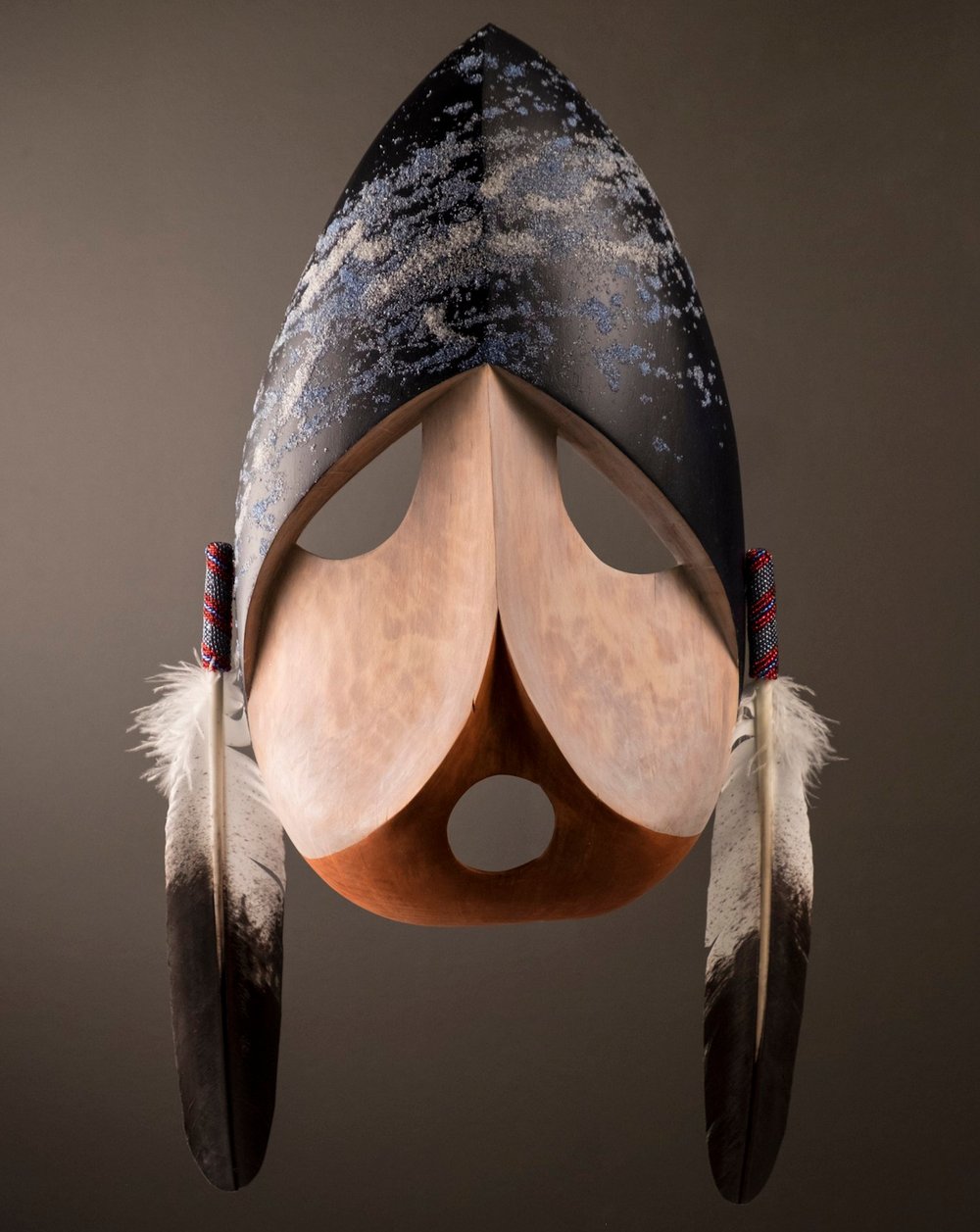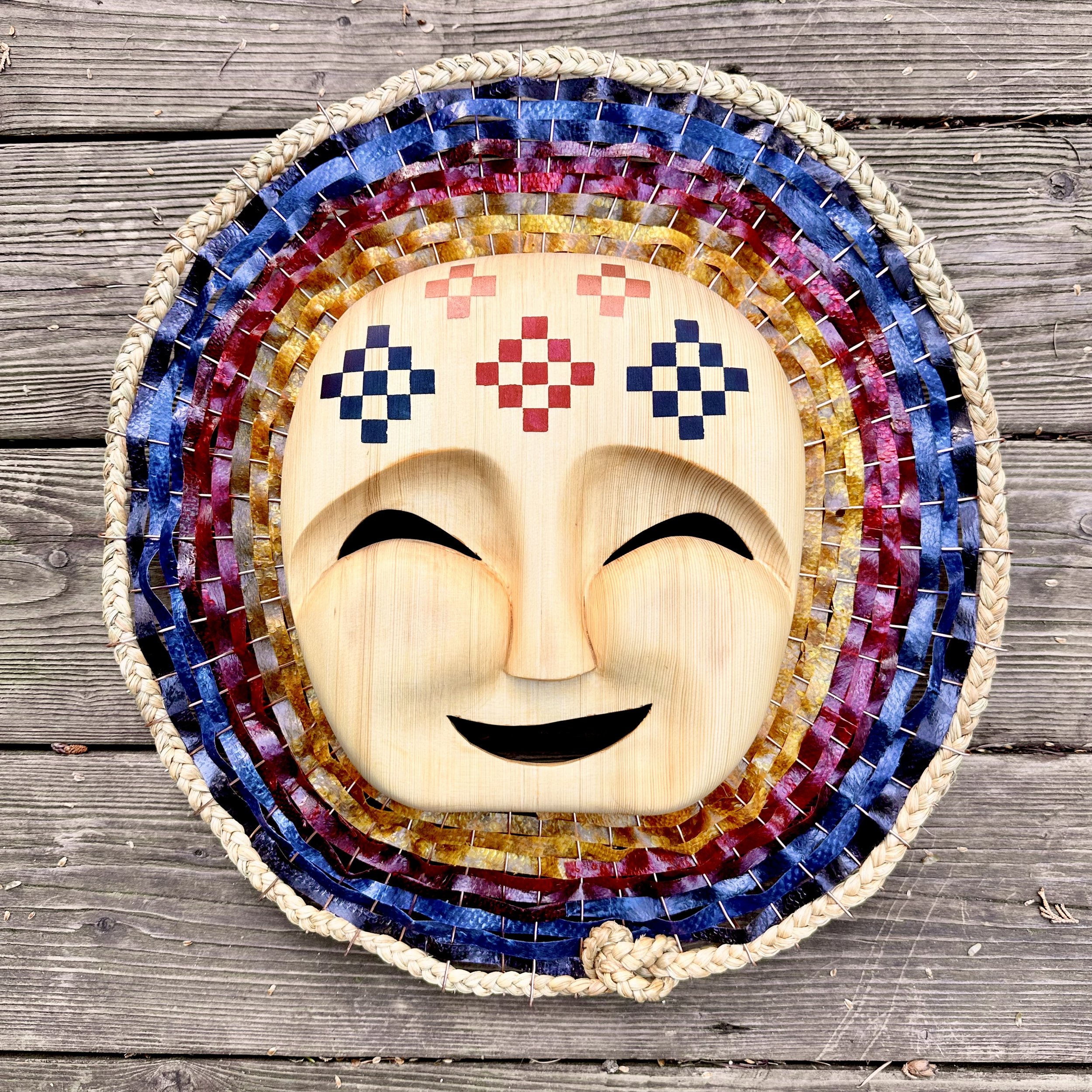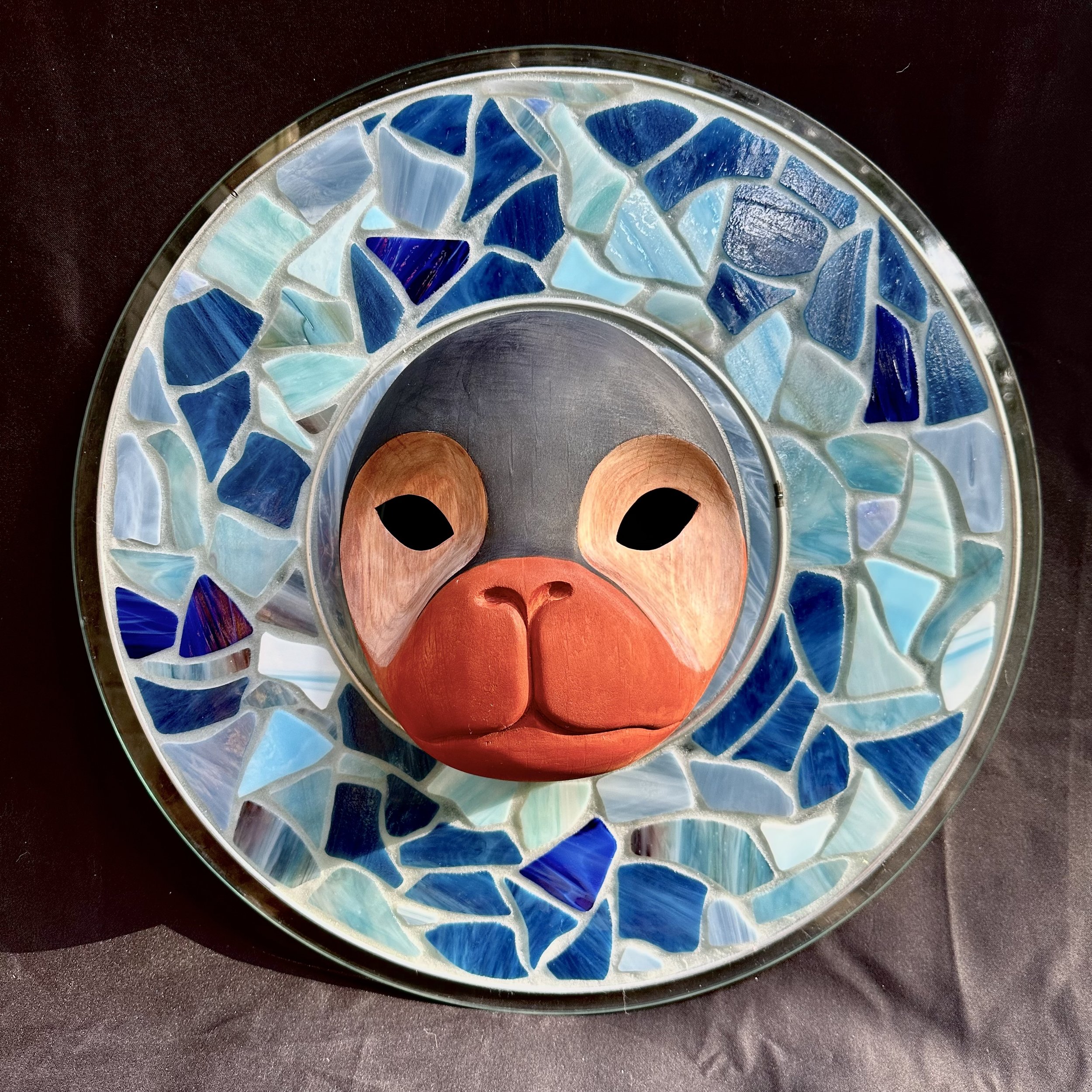Ataucikun - All Together
Yellow cedar, red cedar branches, pigments, salvaged feathers, waxed twine.
24”h x 13”w x 2.5”d
$2600 - will be on view at the Anchorage Museum’s Salmon Culture exhibition, October 2023 through September 2024
A central expectation of Yup’ik traditional life is mutual respect between the human, animal/plant, and spirit worlds. Rules were established for human behavior in particular so that the balance between these worlds was maintained and stayed healthy. Misbehavior led to imbalance, which led to the animals, plants, and even driftwood to withhold themselves from the offending people.
These relationships continue today as living relationships. Coastal and river Native peoples continue to advocate for proper care of salmon and other wildlife populations so that they remain healthy and can continue to nourish our communities. The work of these advocates is grounded in our cultural traditions, and I hope their efforts inspire everyone to take part in returning our lands to balance.
Kellarvik - Grass Basket
Yellow cedar, acrylic paint, home-tanned and -dyed salmon skin, copper wire, vintage braided beach grass
16”w x 16.5”h x 2 3/4”d
$3600
My grandma created beautiful baskets out of the beach grass that grows abundantly around Tununak, AK. I spent countless hours watching her expertly weave and sew each basket, observing how she prepared the grass and pulled out small bundles from the plastic bag at her side. The shape of the mask is based on the outline of one of these types of baskets, and the design on the forehead is a common geometric pattern found across the Yup'ik region. I tanned the salmon skins and chose to dye them in colors that made me think of the sharing and passing down of knowledge between generations. The braided grass around the outer rim is from an old Yup'ik storage basket gifted to me by some lifelong friends. I used copper wire as an offering to my ancestors, which is a teaching I learned from watching a video of Yup'ik culture bearer Chuna McIntyre.
Cill’aq-Circular Calendar
Stained glass, lead came, old growth red cedar, pigments, copper wire, chain
24” diameter x 2”d
$3200-SOLD
The Western calendar, also known as the Gregorian calendar, has a clear beginning and end, and is always presented in a linear fashion. Many Indigenous societies, though, recognized time as cyclical, and many calendars or calendar-like tools show this understanding as a circle. The colors of the glass are intended to represent the changing seasons and the way in which one season melds into the next in a never-ending cycle.
The designs on the mask are intended to represent a deepening of this concept, with the understanding that living in harmony with the world and time also requires an acceptance of the interconnectedness of all things. Preparations for one season do not occur in that season, they have to be done in the previous seasons. We also have to accept that something happening “over here” will absolutely affect something “over there.” As humans, we are not above or below the world around us, we are equal to it.
The circle-and-dot motif on the forehead represents our inextricable place in the universe, the lines above and below the eyes represent air, land and water, and the thick lines around the eyes represent spiritual protection, to prevent us from falling prey to wrong-ways of thinking and behaving.
Checking in II
Alder, stained glass, plate glass, metal rings, grout, pigments
20” diameter x 4” deep
SOLD
This mask relates to the story of the boy who lived with the seals for a year. He was transformed into a seal during this time, and the seals taught him the correct ways of living in exchange for offering themselves to humans for food and material resources. After the year was over, the boy turned back into a human and was responsible for teaching his community the rules he learned. Since that time, seals continue to check up on us to ensure that we are upholding our agreed-upon responsibility.




